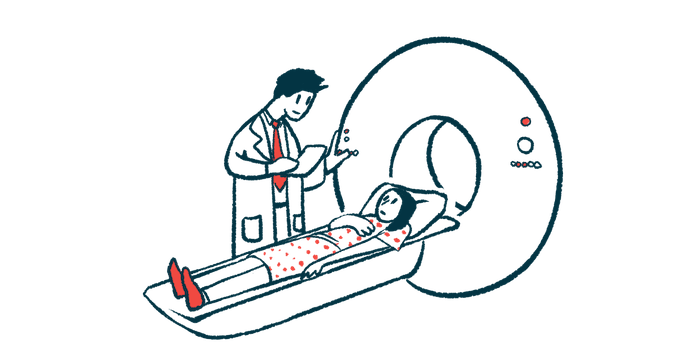EEG or MRI Alone Not Enough to Diagnose CLN2, Panel Agrees
Specialists address the need for earlier diagnosis and treatment
Written by |

Although electroencephalogram (EEG) and MRI findings may detect early signs of ceroid lipofuscinosis type 2 disease (CLN2), they cannot diagnose the condition independently, according to a panel of disease specialists.
For an early diagnosis, the panel recommends that genetic testing be initiated soon after early clinical and EEG/MRI abnormalities arise.
Expert findings were published in the Journal of Child Neurology, in the study “Role of Electroencephalogram (EEG) and Magnetic Resonance Imaging (MRI) Findings in Early Recognition and Diagnosis of Neuronal Ceroid Lipofuscinosis Type 2 Disease.”
CLN2, also called classic late infantile Batten disease, is a rare disorder caused by mutations in the CLN2 gene, which carries instructions to create an enzyme called tripeptidyl peptidase1 (TPP1). Such mutations lead to the toxic buildup of waste inside cells, particularly nerve cells. Signs and symptoms typically emerge between ages 2–4, with early features including recurrent seizures (epilepsy), language delays, and difficulty coordinating body movements (ataxia).
CLN2 can be diagnosed by genetic testing and/or by measuring TPP1 activity. However, in the absence of routine screening, the condition must first be suspected by the diagnosing physician. Because of CLN2’s rarity, many healthcare providers may have limited awareness of the disease. Even more challenging, the early signs and symptoms are not unique to CLN2, increasing the potential for initial misdiagnosis and treatment delays.
Studies suggest that CLN2 patients can show atypical brain wave activity, as measured with EEG, and changes in brain structure via MRI images.
Researchers based at the Nationwide Children’s Hospital in Columbus, Ohio convened a group of CLN2 specialists to discuss real-world EEG and MRI findings to raise awareness about early indicators of CLN2 to support a more prompt diagnosis and treatment.
The study was sponsored by BioMarin Pharmaceutical, the maker of Brineura (cerliponase alfa), an approved enzyme replacement therapy designed to slow walking decline in CLN2 children by providing an external source of the missing TTP1 enzyme.
Experts gathered information on early clinical signs and EEG and MRI results for 18 CLN2 patients, with initial clinical symptoms emerging between 1 and 3.5 years of age. Language difficulties were seen in all 18 patients and were the first symptom in 15 (83%) patients. The researchers noted that language delay alone was limited as an early indicator of CLN2 because of the natural variation in the speed of language development.
Almost all patients (94.4%) experienced seizures, mainly after language delays. Eight (44%) patients had received other diagnoses before their CLN2 diagnosis, most frequently various forms of epilepsy. Diagnoses were revised with further decline or new symptoms. CLN diagnosis was established from 2 years, 7 months to 4 years, 9 months, and diagnostic delays extended up to 3 years, 5 months.
In most institutions, an EEG was required after the first seizure. On initial EEG, 16 (88.9%) showed background slowing, representing a developmental slowing in children. Epileptiform discharge, a rare abnormal pattern associated with epilepsy, was seen in 16 (88.9%) patients. Abnormal response to light stimulation occurred in seven of 17 patients.
Experts agreed that an altered response to light stimulation was generally not present until a six-month follow-up. Therefore, as an early indicator of CLN2, it could delay the diagnosis. Overall, they recommended that each EEG facility develop a protocol for light stimulation testing for young children with new-onset seizures and that any unusual EEG findings should be followed up with a pediatric neurologist.
MRIs usually were performed with early-onset seizures in children younger than 3 years. On the first MRI scans, most patients (77.8%) had shrinkage (atrophy) of the cerebellum — the area of the brain that controls coordination and balance. Atrophy of the main part of the brain, or the cerebrum, was seen in nine patients (50%), while matter abnormalities were found in 11 (61.1%).
However, the extent of atrophy at the initial MRI often was subtle and sometimes recognized as abnormal only in hindsight; there alsonwas a lack of data from normally-developing children, which hampered interpretation. The panel recommended the implementation of age-appropriate tools to assist in the identification of early white-matter abnormalities and atrophy in young children.
At follow-up MRIs, all 15 patients who were assessed showed cerebellar and cerebral atrophy and white-matter abnormalities. Although MRI findings were consistent across patients and may be an early indicator, “atrophy is common to a number of diseases and therefore not sufficient as a single diagnostic indicator,” the researchers wrote.
Based on published literature and their own experience, the panel agreed that none of the EEG and MRI results were unique to CLN2 or occurred at a high enough incidence to be an indicator on their own. Thus, to achieve an early diagnosis, the team recommended that a combination of clinical and EEG/MRI abnormalities should raise a red flag for CLN2 and the need for prompt genetic testing.
Genetic testing not uniform
Discussions also found that the criteria for genetic testing differed between institutions, and seizure guidelines do not yet incorporate genetic testing as a first-line measure for assessing new-onset seizures.
Given the impact of early diagnosis and treatment on the rate of CLN2 progression, panelists said, “an argument can be made for routine screening of children who display subtle clinical symptomatology encountered with CLN2, such as autism, global developmental delay, or new-onset seizure with developmental delay.”
“Greater awareness of the early signs of CLN2, an increased adoption of genetic testing early in the diagnostic journey, and improved communication across specialties is needed to afford earlier diagnosis and initialization of targeted disease-modifying therapies,” the researchers concluded.






